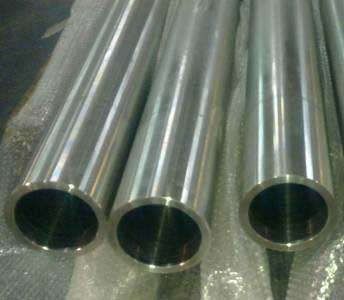


The faster the deposition speed, the faster the cladding process can be completed. Several types of welding are used to clad workpieces with Inconel, and generally each offers a tradeoff between deposition rate and the level of dilution of the Inconel with iron.ĭilution is related to the second concern, which is the speed at which Inconel cladding can be deposited. However, good fusion and penetration dilutes the Inconel with iron from the substrate, undermining the purpose of the Inconel cladding process. Creating a strong metallurgical bond requires deep penetration and fusion of the deposited Inconel with the underlying steel. The first is the mixing of the Inconel and steel underneath. There are two main concerns related to the Inconel® weld cladding process. Several different types of arc welding are used in cladding Inconel, and each has its own tradeoffs. Inconel weld cladding processes have the advantage of requiring less setup and more easily accommodating workpieces with difficult geometries. This increases the time it takes to get from raw materials to a finished product.īecause of these drawbacks, hot isostatic pressing has mostly been replaced by arc welding cladding processes that deposit a layer of molten Inconel as the welding electrode is moved around the surface. Time: The process effectively doubles the amount of fabrication work required for each piece to be clad and adds considerable process work for each step.A substantial effort is required to ensure that each step is performed correctly. Complexity: Hot isostatic pressing is a multi-step process that involves not only the fabrication and machining of the workpiece and interior lining, but the assembly of the two into a vacuum-tight form with a layer of Inconel between them.

Creating this form requires additional fabrication, and machining forms for pieces with complex geometries can be difficult. Machining: The process depends on keeping powdered Inconel in place with an interior form.Size: The size of the pipe and fixtures to be clad are limited by the size of the available autoclave, and the size of the autoclave can limit the number of pieces produced per shift or day.However, the isostatic pressing method of cladding has several drawbacks: This process is a form of sintering metallurgy that is still used to create high-quality Inconel and other metallic components today. The powder then melted and formed an Inconel lining inside the piece. This space was then filled with a powdered form of Inconel or another corrosion-resistant alloy, and the whole assembly was placed into an autoclave where it was heated to high temperatures at high pressures. It involved machining and fabricating an internal lining for the piece to be clad and creating a vacuum-tight space between the body of the piece and the liner. The earliest Inconel® cladding process was hot isostatic pressing. The Development of Inconel Weld Overlay Cladding These developments have made the Inconel cladding process more flexible-allowing more types of pipes and fittings to be lined-and more robust, allowing The Inconel cladding process has changed over time as new methods of bonding dissimilar metals are developed and refined. In order to resist the action of the corrosive compounds found in crude oil, petroleum companies often line their steel process piping and tanks with corrosion-resistant alloys like Inconel®. Offshore petroleum extraction adds seawater to the mix of corrosives, while the pressure of the ocean depths tends to exacerbate corrosion. Hydrogen can also infiltrate the grain boundaries of steel and weaken the bond in steel crystalline lattices, making the steel brittle. The carbon dioxide and hydrogen sulfide in crude oil reacts with steel alloys to form iron precipitates, degrading the structural integrity of the steel. For example, corrosion is an ongoing problem in petroleum extraction, refining, and shipping. Corrosion is an omnipresent issue when working with metals.


 0 kommentar(er)
0 kommentar(er)
